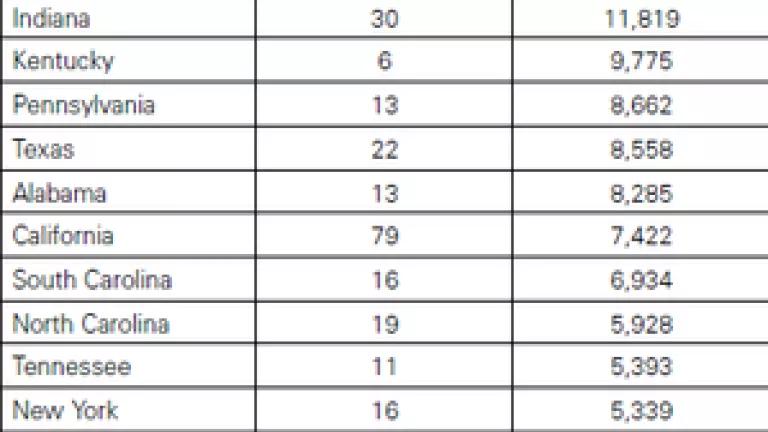
Today President Obama is speaking at a factory in Holland, Michigan that makes lithium batteries for advanced hybrid electric cars. We have heard a lot of bad news about the economy lately, but when the President stands in the Johnson Controls’ plant, we will hear a different truth: clean cars have powered Detroit’s turnaround and put Americans back to work.
This isn’t a projection about the future. It is happening today. Clean car manufacturers have already created more than 151,000 jobs in America.
There are more than 300 companies in the clean car sector with facilities in 43 states, according to a report released earlier this week by NRDC, the United Auto Workers, and the National Wildlife Federation. The White House blogged about the report today in advance of President Obama's trip.
Michigan and Ohio are home to the most clean car workers, but thousands more are employed in Kentucky, Pennsylvania, Texas, Alabama, and North Carolina.
These Americans are performing jobs that hardly existed 10 years ago: they manufacture components and supply parts for advanced gasoline and diesel vehicles, hybrids, plug-in electric vehicles, and the infrastructure for charging electric vehicles.
There is one driving force behind this explosive growth: smart fuel economy standards.
I first started working on fuel standards back in the late 1980s, when passenger cars in the United States averaged 21.1 miles per gallon. By 2008, the average had crept up to a measly 22.6 miles per gallon. Then President Obama came into office and created a clean car standard that required cars and light trucks to reach 35.5 miles per gallons for model years 2012 through 2016.
This standard sparked innovation. According to our new report, U.S. patents for hybrid and electric vehicle technologies reached an all time high in 2010, climbing 60 percent from the year before. GM, Toyota, and Ford led the field with the most new patents, while Michigan had the most U.S. clean energy patents granted of all 50 states.
As a result of all this ingenuity, tens of thousands of Americans are helping design and manufacture cars that will save drivers money at the pump and reduce dangerous air pollution.
As significant as 151,000 jobs are, this is only the beginning. At the end of July, I went to Washington to hear President Obama announce the second phase of his clean car standards. By 2025, new cars and light trucks will reach 54.5 miles per gallon. This means that on average cars in America will go twice as far on a gallon of gas as they do today. This will save Americans $80 billion a year at the gas pump and reduce our oil use by 3.1 million barrels per day by 2030.
And it will create more jobs. Ten years ago, electric vehicles were unavailable and hybrid cars hard to find. Today, 31 different hybrid and electric models have hit the road, and over 100 more will likely follow within four years. More clean cars and more clean-car jobs will follow.
When I attended President Obama’s announcement of the new standards a few weeks ago, I was struck by the fact that he was joined by the heads of eleven major car companies. Though the auto industry first baulked at the idea of a rigorous standard, it has since come on board.
After all, the 151,000 Americans who are already building cleaner cars have proven that the U.S. can lead the automotive market once again. We know we can build the cars of the future, because we are already doing it today.
